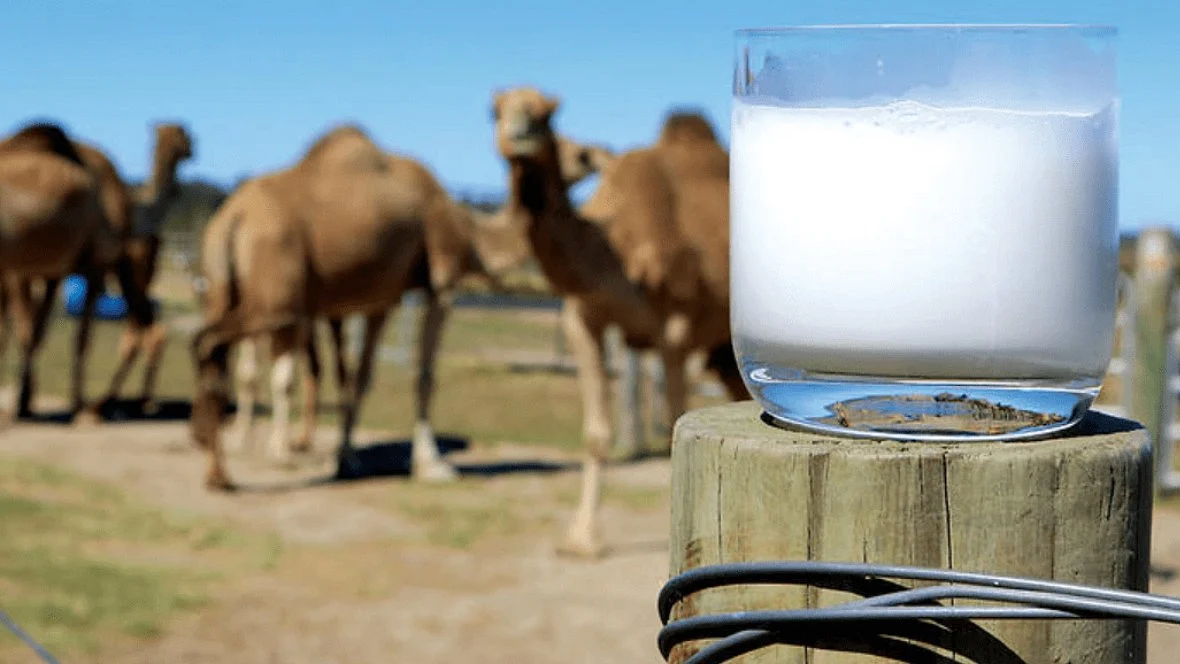The unique composition of camel milk: A food with medicinal properties
It’s diversity of the nomadic diet, and the fact that they keep healthy by walking such long distances explain unique properties of camel milk. It is being used now in treatment of autistic children

Since 2001, June 1 each year has been observed by the Food and Agriculture Organization of the United Nations as World Milk Day. For the first time this year, camel milk consumers and producers from across 35 countries have come together to focus attention on the unique properties of this milk.
Camels are such large animals that they cannot be raised in farms – they are adapted to deserts, and can go for days without water. They are traditionally herded by nomads, who walk vast distances with their herds. The animals feed at different spots along the way, getting a range of desert vegetation as their regular diet.
It is the diversity of the nomadic diet, and the fact that they keep healthy and active by walking such long distances explains the unique properties of camel milk. For some years now, camel milk has been used in the treatment of autistic children.
In 2019, the Journal of Family Medicine and Disease Prevention published an essay by scientists from Jordan and Iraq titled “Miraculous properties of camel milk and perspective of modern science,” showing that camel milk differed from other milk in being a source also of vitamin C; this makes it a very special part of the desert diet, as other sources of vitamin C are hard to find in desert landscapes.
Camel milk could also be used by those with lactose intolerance problems. It has antifungal, antiviral and antibacterial properties, was helpful for those with diabetes, and can inhibit the proliferation of cancer cells. The scientists have also noted that camel milk was beneficial for those under treatment for malaria, gastrointestinal disorders and tuberculosis.
In 2005, researchers at the Bikaner Diabetes Care Research Centre in Rajasthan discovered that consumption of camel milk regularly could reduce the dose of insulin that those suffering from Type 2 diabetes took.
The author Christina Adams is responsible for popularizing camel milk as treatment for autism in the US. In TV interviews, she explained that she met a man with a camel at a children’s book fair, and it was through him that she learned that camel milk was supplied to hospitals in the Middle East for feeding premature children because they had no risk of allergy to it.
Her own son is autistic, and she intuitively began to delve deeper into the properties of camel milk because she felt it could help her child. She was responsible for changing US laws to allow the import the camel milk. She said the change she saw in her son after she started him on camel milk was quite miraculous – he showed greater motor control, was more expressive and empathetic. These days, when a parent receives a confirmation of the diagnosis of autism in the US, it is quite the standard practice to set about getting camel milk.
Camel expert Ilse Kohler Rollfson explains that the camels of the Thar desert feed on 36 different varieties of plants, many of which also have medicinal properties recognized by Ayurveda. This special diet is considered to be one cause of the uniqueness of camel milk. This varied diet is impossible to replicate in a farm. What is more, the animals walk long distances, unlike farm animals that are often restricted to crowded spaces.
The Raika of Rajasthan, traditional camel herders, also share a unique bond with their animals – the camel that is milked is also allowed to feed her calf. The Raika share a close, familial bond with their animals. Milking a camel could be a risky affair; to the Raika, however, the camels offer their milk without protest.
Camel Charisma, a dairy in Rajasthan that now markets the camel milk of the Raika herders, finds that several of those seeking out camel milk in India are parents of autistic children. HanwantSingh Rathore, co-founder of Camel Charisma, says the milk is now also getting the tag of being Rajasthan’s traditional health food.
With climate change and global water scarcity, the camel is the animal that can be relied on to produce milk with a relatively low intake of water. Camels are the second-fastest growing herbivorous livestock in the world, after buffalo. In Uganda and Tanzania, where there is no traditional camel herding, livestock herders are taking to the camel. Dairy farmers find the camel best suited to tough, drought ridden areas. It is estimated that up to 70 per cent of camel milk in the world is consumed by herders, and does not ever reach the market for sale.
The concern in India is that the number of camels has been dwindling at a rapid pace. The 20th Livestock Census of 2018 showed that there are 250,000 camels in the country. There were 400,000 in 2012 and 517,000 in 2007. A concerted effort is now being planned to address the problems of camel herders by NGOs and government in Rajasthan.
In January last year, Amul launched camel milk in select markets in India. With this milk’s proven medicinal value, the story of camel milk may only just have begun in India.
Follow us on: Facebook, Twitter, Google News, Instagram
Join our official telegram channel (@nationalherald) and stay updated with the latest headlines
